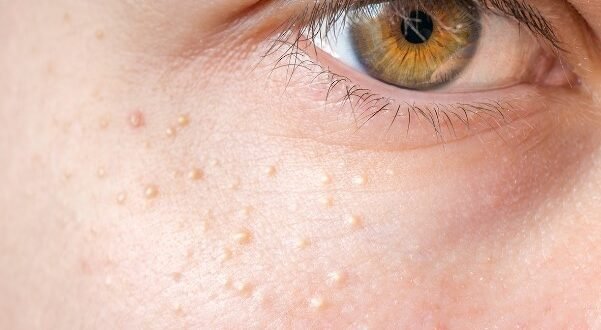Introduction
Milialar, a common skin condition, often poses challenges to those affected. Understanding its root causes and effective prevention strategies is crucial for managing and mitigating its impact. In this comprehensive guide, we delve into the depths of Milialar, exploring its triggers and providing actionable steps to prevent its occurrence.
What Causes Milialar and How to Stop It?
Unraveling the Origins of Milialar
Milialar, characterized by the appearance of small, white bumps on the skin, can be attributed to various factors. Genetic Predisposition: One significant cause lies in genetics, where individuals may inherit a tendency for excessive keratin production, leading to the formation of milia. Skin Trauma: Trauma to the skin, such as burns or harsh exfoliation, can disrupt the natural skin barrier, contributing to milia formation.
Understanding Environmental Influences
Sun Exposure: Prolonged exposure to harmful UV rays can exacerbate skin conditions, including milia. Humidity and Climate: Environmental factors like high humidity levels can clog pores, leading to milia development.
Impact of Skincare Products
Certain skincare products containing heavy oils or comedogenic ingredients may clog pores, fostering milialar conditions. Inadequate Hydration: Dehydration can compromise skin health, increasing the likelihood of milia formation.
Preventing Milialar Breakouts
Adopting a Gentle Skincare Routine
H1: Avoid Harsh Exfoliation Harsh exfoliation can damage the skin barrier, exacerbating milia. Opt for gentle exfoliants with round beads or chemical exfoliants containing AHAs or BHAs. H2: Choose Non-comedogenic Products Prioritize skincare products labeled as non-comedogenic, ensuring they do not clog pores or promote milia formation. H3: Sun Protection is Key Regular use of sunscreen with a broad-spectrum SPF can shield the skin from harmful UV rays, reducing the risk of milia. H4: Hydration for Healthy Skin Maintain adequate hydration levels by drinking water and using hydrating skincare products to support overall skin health.
Seeking Professional Assistance
In severe cases or persistent milia, consulting a dermatologist is advisable. They can offer personalized treatment plans, including extraction or chemical peels, to address milia effectively.
Frequently Asked Questions (FAQs)
- What are the common triggers for milia formation?
- Milia can be triggered by genetic predisposition, skin trauma, sun exposure, and the use of comedogenic skincare products.
- Can milia be prevented through skincare routines?
- Yes, adopting a gentle skincare routine, avoiding harsh exfoliation, choosing non-comedogenic products, and prioritizing sun protection can help prevent milia.
- Are there any natural remedies for milia?
- While natural remedies like gentle exfoliation with oatmeal or honey masks may offer temporary relief, consulting a dermatologist for proper diagnosis and treatment is recommended.
- Can milia disappear on their own?
- In some cases, milia may resolve spontaneously over time. However, seeking professional guidance can expedite the process and prevent recurrence.
- Is milia a sign of poor skincare hygiene?
- Not necessarily. Milia can occur regardless of skincare hygiene due to various factors, including genetics and environmental influences.
- Are there any dietary changes that can help prevent milia?
- While no specific dietary changes are proven to prevent milia, maintaining a balanced diet rich in vitamins and minerals can support overall skin health.
Conclusion
Understanding the underlying causes of milia and implementing preventive measures are crucial steps in managing this common skin condition. By adopting a gentle skincare routine, prioritizing sun protection, and seeking professional guidance when needed, individuals can effectively prevent milia breakouts and maintain healthy, radiant skin.
